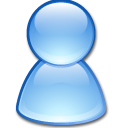bookmarks (hide)20
- Chancellor Zimpher, Commissioner Elia Announce Historic Partnership To Address New York’s Teaching Shortage and improve teacher education
- New book unveils faculty-led effort to chart concepts and competencies students should learn in six academic disciplines, with plan to create standardized tests. Will faculty members warm to this version of "learning outcomes"?
- This paper overviews the diverse information technologies that are used to provide athletes with relevant feedback. Examples taken from various sports are used to illustrate selected applications of technology-based feedback. Several feedback systems are discussed, including vision, audition and proprioception. Each technology described here is based on the assumption that feedback would eventually enhance skill acquisition and sport performance and, as such, its usefulness to athletes and coaches in training is critically evaluated.
- This video looks at improving assessments so they don’t just measure learning but help create learning. It had some great examples of where folks go wrong and focuses on higher education where I preside. I enjoyed how it outlined better steps to lead to learning. Thinking about incorporating peer feedback as well as the need for good rubrics played in well to the greater themes.
- Outlining Caines Brain/Mind principles of natural learning
- Advances in the study and development of cognitive training in athletes
- How can you use group work effectively in a college setting, particularly in the sciences? Instructors and students share their experiences, and Carl Wieman ...
- Gardner shares his belief that we must cultivate five minds for the future: Discipline, Synthesis, Creative (cognitive), Respectful, and Ethical (behavioral). He shares that these will be important for us to cultivate to help individuals be successful in our future world.
- Fun site with links to articles on many learning theories including Piaget, Constructivism, Behavioralism, Brain Based Learning, Social Cognition, Emotional Inteligence, Social Learning Theory, and more.
- Apps like Ubersense and AMPSports bring run-by-run data to skiers, bobsledders and other competitors
- Explanation of what curriculum is and takes a brief look at both standards and process based approached
- I’ve included this website as NASPA is one the key associations in informing student affairs practitioners. Assessment is coming into play more and more for higher ed professionals for a couple of reasons. The first is there is an impetus to measure our work and impact on students. The other is to identify ways in which we can complement the academic side to better educate and to better retain students. NASPA provides some great benchmarking data as well to compare peer institutions, like students, and so on.
- I’m included this link as the idea of player and team assessment in professional sports has begun to change. I just find this a fascinating topic in how our society is seeing a shift in how we evaluate in general including in the realm of professional sports. In the past player evaluation was done by experts who would watch and make a decision – the process is very subjective. Analytics provide ways to quantify in numbers what we see happen on the ice or field. The same goes for teams. While at the end of the day the score is what matters, analysts have found metrics to identify keys to long term success for teams as well.
- Neat blog post arguing for using technology to truly differentiate learning and provide 21st century assessment in 21st century classrooms.
- Explanation of what Standards Based Education is and efforts to create SBE themed reforms in the US
- Great video sharing the goals of ACPA – another key association for higher ed professionals – for identifying the role of technology into the practices of higher ed professionals and in working with students.
- I chose this video because it highlights how technology can be used to differentiate instruction and of course assessment. I think this is one of the biggest areas where technology can be a game changer in terms of presenting material in different manners and allowing students to show their knowledge and application in different ways. The comments about day to day feedback and self assessment was a theme I found in several of the clips and articles.
